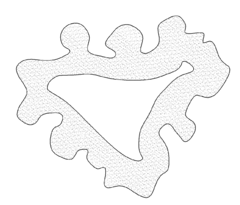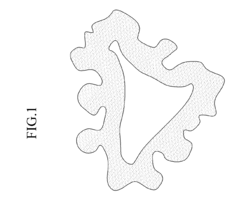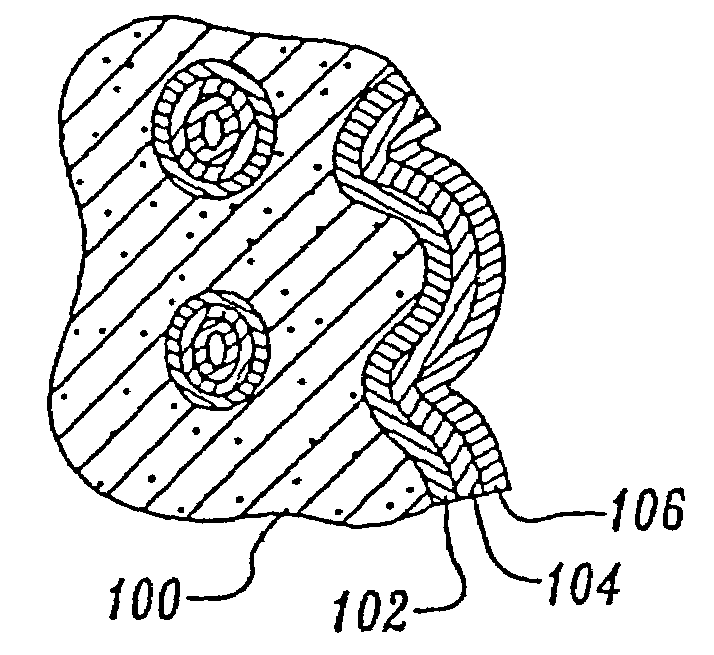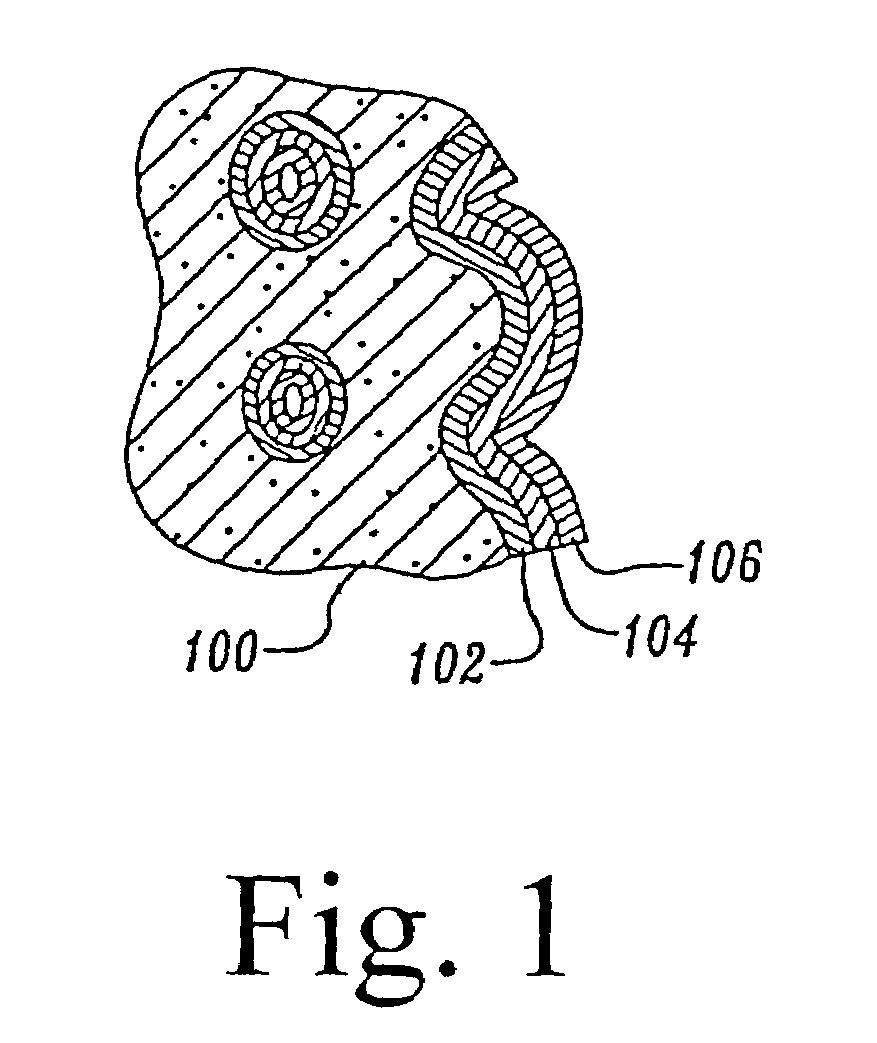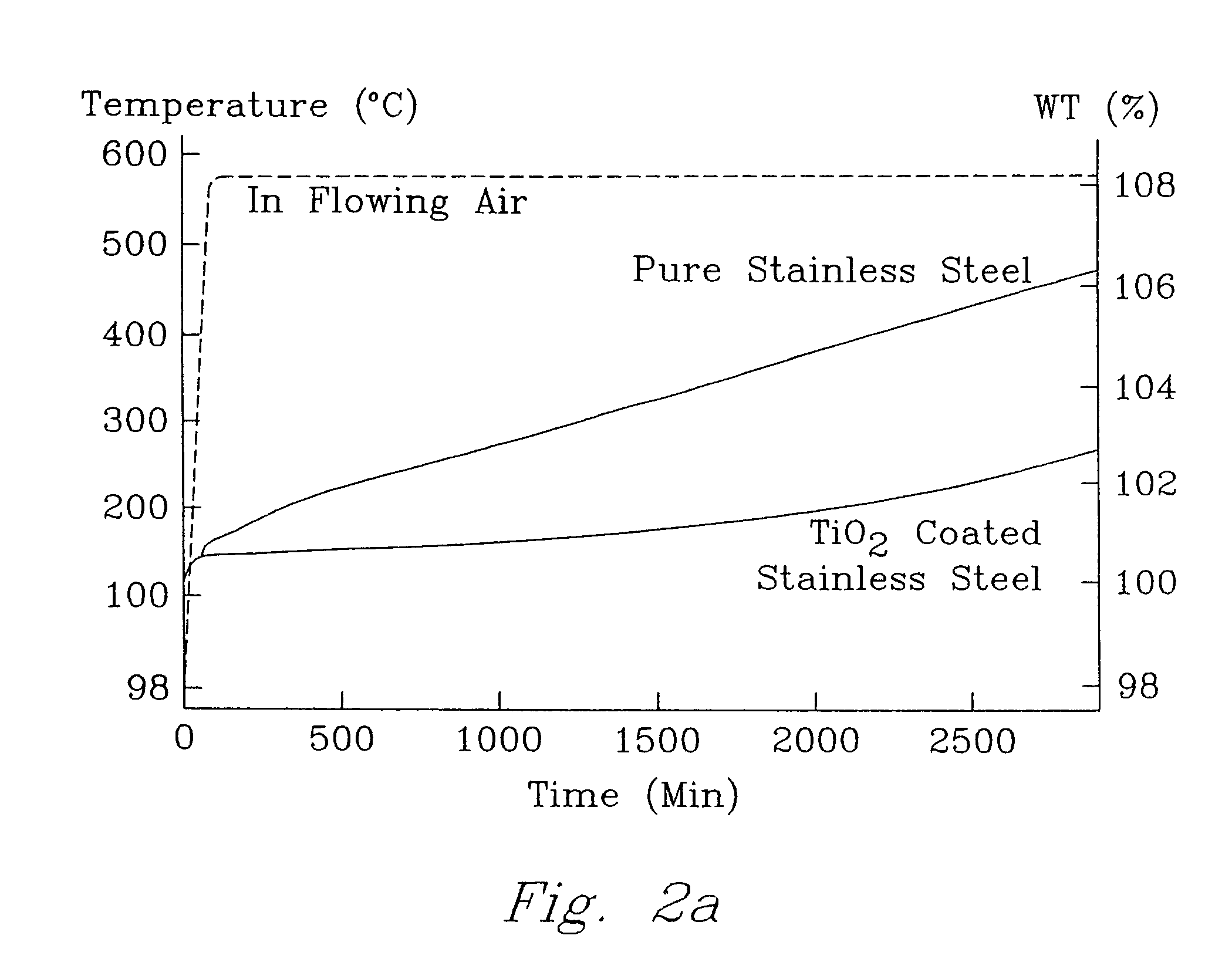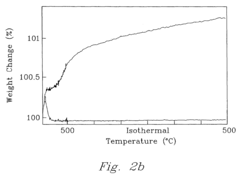Comparison of Catalytic Efficiency in Metal Foam Fabrication
OCT 15, 20259 MIN READ
Generate Your Research Report Instantly with AI Agent
Patsnap Eureka helps you evaluate technical feasibility & market potential.
Metal Foam Catalysis Background and Objectives
Metal foam catalysis represents a significant advancement in heterogeneous catalysis, emerging from decades of research into porous metal structures. Since the 1960s, metal foams have evolved from experimental materials to sophisticated catalytic platforms, with major breakthroughs occurring in the 1990s when manufacturing techniques matured enough to produce consistent cellular structures with controlled porosity. The inherent properties of metal foams—high surface area-to-volume ratio, excellent thermal conductivity, and mechanical stability—make them ideal candidates for catalytic applications across various industries.
The evolution of metal foam catalysis has been driven by increasing demands for more efficient chemical processes with reduced environmental impact. Traditional catalytic systems often suffer from mass transfer limitations, pressure drop issues, and thermal management challenges. Metal foams address these limitations by providing enhanced fluid flow characteristics, improved heat distribution, and greater accessibility to catalytic sites, resulting in potentially higher conversion rates and selectivity.
Current research focuses on optimizing the catalytic efficiency of different metal foam compositions and structures. Various metals including nickel, copper, aluminum, and precious metals like platinum and palladium have been investigated as base materials, each offering distinct catalytic properties. The fabrication methods—ranging from powder metallurgy and investment casting to electrodeposition and additive manufacturing—significantly influence the final catalytic performance through their effects on pore size distribution, surface morphology, and metal crystallinity.
The primary objective of this technical research is to systematically compare the catalytic efficiency across different metal foam fabrication techniques. This comparison aims to establish correlations between manufacturing methods, resultant foam structures, and catalytic performance metrics such as activity, selectivity, and stability. By identifying these relationships, we seek to develop predictive models that can guide the design of application-specific metal foam catalysts with optimized performance characteristics.
Additionally, this research intends to explore the potential for hybrid metal foam systems that combine multiple metals or incorporate functional coatings to enhance catalytic properties. The integration of computational modeling with experimental validation will enable more rapid development cycles and potentially reveal novel structural configurations with superior catalytic efficiency.
The ultimate goal is to establish a comprehensive framework for evaluating and predicting metal foam catalytic performance based on fabrication parameters, thereby accelerating the development of next-generation catalytic systems for applications in energy conversion, environmental remediation, and chemical synthesis.
The evolution of metal foam catalysis has been driven by increasing demands for more efficient chemical processes with reduced environmental impact. Traditional catalytic systems often suffer from mass transfer limitations, pressure drop issues, and thermal management challenges. Metal foams address these limitations by providing enhanced fluid flow characteristics, improved heat distribution, and greater accessibility to catalytic sites, resulting in potentially higher conversion rates and selectivity.
Current research focuses on optimizing the catalytic efficiency of different metal foam compositions and structures. Various metals including nickel, copper, aluminum, and precious metals like platinum and palladium have been investigated as base materials, each offering distinct catalytic properties. The fabrication methods—ranging from powder metallurgy and investment casting to electrodeposition and additive manufacturing—significantly influence the final catalytic performance through their effects on pore size distribution, surface morphology, and metal crystallinity.
The primary objective of this technical research is to systematically compare the catalytic efficiency across different metal foam fabrication techniques. This comparison aims to establish correlations between manufacturing methods, resultant foam structures, and catalytic performance metrics such as activity, selectivity, and stability. By identifying these relationships, we seek to develop predictive models that can guide the design of application-specific metal foam catalysts with optimized performance characteristics.
Additionally, this research intends to explore the potential for hybrid metal foam systems that combine multiple metals or incorporate functional coatings to enhance catalytic properties. The integration of computational modeling with experimental validation will enable more rapid development cycles and potentially reveal novel structural configurations with superior catalytic efficiency.
The ultimate goal is to establish a comprehensive framework for evaluating and predicting metal foam catalytic performance based on fabrication parameters, thereby accelerating the development of next-generation catalytic systems for applications in energy conversion, environmental remediation, and chemical synthesis.
Market Applications and Demand Analysis
The metal foam market has experienced significant growth in recent years, driven by increasing demand across multiple industrial sectors. The global metal foam market was valued at approximately 85 million USD in 2022 and is projected to reach 115 million USD by 2028, representing a compound annual growth rate of around 5.2% during the forecast period. This growth trajectory underscores the expanding applications and market penetration of metal foam technologies.
The automotive industry represents one of the largest application segments for metal foam, particularly aluminum-based foams. The push for lightweight materials to improve fuel efficiency and reduce emissions has created substantial demand for metal foams in vehicle components such as crash absorbers, structural reinforcements, and acoustic dampeners. Major automotive manufacturers have begun incorporating metal foams into their designs, signaling a shift toward mainstream adoption.
Aerospace applications constitute another significant market segment, where the exceptional strength-to-weight ratio of metal foams makes them ideal for structural components in aircraft and spacecraft. The thermal management capabilities of metal foams are particularly valuable in this sector, with applications in heat exchangers and thermal protection systems. Market analysis indicates that aerospace applications are expected to grow at the fastest rate among all segments, driven by increasing investment in next-generation aircraft development.
The energy sector presents emerging opportunities for metal foam applications, particularly in catalytic processes for energy conversion and storage. Metal foams with optimized catalytic efficiency are being developed for fuel cells, hydrogen production systems, and advanced battery technologies. This segment is projected to expand significantly as renewable energy technologies mature and scale commercially.
Construction and building materials represent a volume-driven market for metal foams, with applications in fire-resistant panels, sound insulation, and architectural elements. The superior thermal insulation properties of metal foams make them attractive alternatives to traditional materials, particularly in regions with stringent building energy efficiency regulations.
Regional analysis reveals that North America and Europe currently dominate the metal foam market, accounting for approximately 60% of global consumption. However, the Asia-Pacific region is expected to witness the highest growth rate, driven by rapid industrialization in China and India, along with increasing adoption of advanced materials in manufacturing processes.
The market landscape is characterized by increasing competition among manufacturers to develop more efficient and cost-effective production methods. Catalytic efficiency in metal foam fabrication has emerged as a critical differentiator, as it directly impacts production costs, material properties, and environmental footprint. Manufacturers capable of demonstrating superior catalytic efficiency are positioned to capture larger market shares and command premium pricing.
The automotive industry represents one of the largest application segments for metal foam, particularly aluminum-based foams. The push for lightweight materials to improve fuel efficiency and reduce emissions has created substantial demand for metal foams in vehicle components such as crash absorbers, structural reinforcements, and acoustic dampeners. Major automotive manufacturers have begun incorporating metal foams into their designs, signaling a shift toward mainstream adoption.
Aerospace applications constitute another significant market segment, where the exceptional strength-to-weight ratio of metal foams makes them ideal for structural components in aircraft and spacecraft. The thermal management capabilities of metal foams are particularly valuable in this sector, with applications in heat exchangers and thermal protection systems. Market analysis indicates that aerospace applications are expected to grow at the fastest rate among all segments, driven by increasing investment in next-generation aircraft development.
The energy sector presents emerging opportunities for metal foam applications, particularly in catalytic processes for energy conversion and storage. Metal foams with optimized catalytic efficiency are being developed for fuel cells, hydrogen production systems, and advanced battery technologies. This segment is projected to expand significantly as renewable energy technologies mature and scale commercially.
Construction and building materials represent a volume-driven market for metal foams, with applications in fire-resistant panels, sound insulation, and architectural elements. The superior thermal insulation properties of metal foams make them attractive alternatives to traditional materials, particularly in regions with stringent building energy efficiency regulations.
Regional analysis reveals that North America and Europe currently dominate the metal foam market, accounting for approximately 60% of global consumption. However, the Asia-Pacific region is expected to witness the highest growth rate, driven by rapid industrialization in China and India, along with increasing adoption of advanced materials in manufacturing processes.
The market landscape is characterized by increasing competition among manufacturers to develop more efficient and cost-effective production methods. Catalytic efficiency in metal foam fabrication has emerged as a critical differentiator, as it directly impacts production costs, material properties, and environmental footprint. Manufacturers capable of demonstrating superior catalytic efficiency are positioned to capture larger market shares and command premium pricing.
Current Catalytic Technologies and Challenges
The catalytic fabrication of metal foams represents a significant advancement in materials science, with various technologies currently employed across the industry. Traditional catalytic methods primarily utilize chemical vapor deposition (CVD) and electrochemical deposition techniques, which have been refined over decades of research. These established approaches offer reliable production capabilities but often struggle with achieving uniform pore distribution and precise control over foam architecture.
Recent developments have introduced sol-gel processing combined with catalytic reactions, allowing for better control of pore morphology and size distribution. However, this method faces challenges related to scalability and production costs when implemented at industrial levels. The catalytic reduction of metal salts in solution represents another promising approach, though it frequently encounters issues with catalyst recovery and environmental concerns regarding waste streams.
A significant technical barrier in current catalytic metal foam fabrication lies in the trade-off between reaction rate and structural integrity. Higher catalytic efficiency often leads to rapid metal deposition that can compromise the mechanical properties of the resulting foam structure. Conversely, slower, more controlled reactions typically require expensive catalysts or energy-intensive conditions that impact economic viability.
Catalyst poisoning and deactivation represent persistent challenges across all methodologies. Impurities in precursor materials can significantly reduce catalytic efficiency over time, necessitating either frequent catalyst replacement or complex purification processes. This issue is particularly pronounced in continuous production systems where maintaining consistent catalytic activity is crucial for product quality.
Energy consumption presents another substantial challenge, as many current catalytic processes require elevated temperatures or electrical inputs to maintain reaction kinetics. This energy demand not only increases production costs but also raises questions about the environmental footprint of metal foam manufacturing technologies.
Recyclability of catalysts remains problematic, with many systems utilizing precious metals or complex compounds that are difficult to recover completely from the production process. This challenge is compounded by the heterogeneous nature of metal foam structures, which can physically entrap catalyst particles within their complex architecture.
Recent research has focused on developing novel catalytic systems incorporating nanomaterials and designer catalyst supports that offer improved efficiency and selectivity. These advanced catalysts show promise in addressing many current limitations but face hurdles related to cost, availability, and integration into existing manufacturing infrastructure. The development of green catalytic processes using environmentally benign reagents represents another frontier, though these approaches typically suffer from reduced reaction rates and efficiency compared to conventional methods.
Recent developments have introduced sol-gel processing combined with catalytic reactions, allowing for better control of pore morphology and size distribution. However, this method faces challenges related to scalability and production costs when implemented at industrial levels. The catalytic reduction of metal salts in solution represents another promising approach, though it frequently encounters issues with catalyst recovery and environmental concerns regarding waste streams.
A significant technical barrier in current catalytic metal foam fabrication lies in the trade-off between reaction rate and structural integrity. Higher catalytic efficiency often leads to rapid metal deposition that can compromise the mechanical properties of the resulting foam structure. Conversely, slower, more controlled reactions typically require expensive catalysts or energy-intensive conditions that impact economic viability.
Catalyst poisoning and deactivation represent persistent challenges across all methodologies. Impurities in precursor materials can significantly reduce catalytic efficiency over time, necessitating either frequent catalyst replacement or complex purification processes. This issue is particularly pronounced in continuous production systems where maintaining consistent catalytic activity is crucial for product quality.
Energy consumption presents another substantial challenge, as many current catalytic processes require elevated temperatures or electrical inputs to maintain reaction kinetics. This energy demand not only increases production costs but also raises questions about the environmental footprint of metal foam manufacturing technologies.
Recyclability of catalysts remains problematic, with many systems utilizing precious metals or complex compounds that are difficult to recover completely from the production process. This challenge is compounded by the heterogeneous nature of metal foam structures, which can physically entrap catalyst particles within their complex architecture.
Recent research has focused on developing novel catalytic systems incorporating nanomaterials and designer catalyst supports that offer improved efficiency and selectivity. These advanced catalysts show promise in addressing many current limitations but face hurdles related to cost, availability, and integration into existing manufacturing infrastructure. The development of green catalytic processes using environmentally benign reagents represents another frontier, though these approaches typically suffer from reduced reaction rates and efficiency compared to conventional methods.
Comparative Analysis of Catalytic Efficiency Methods
01 Metal foam fabrication methods for catalytic applications
Various methods can be employed to fabricate metal foams with enhanced catalytic properties. These include powder metallurgy techniques, space holder methods, and direct foaming processes. The fabrication method significantly impacts the resulting foam's porosity, surface area, and structural integrity, which in turn affects catalytic efficiency. Optimizing these fabrication parameters can lead to metal foams with improved catalytic performance for various chemical reactions.- Metal foam fabrication methods for catalytic applications: Various methods can be employed to fabricate metal foams with enhanced catalytic properties. These include powder metallurgy techniques, space holder methods, and template-assisted approaches. The fabrication process significantly influences the resulting foam structure, including porosity, pore size distribution, and surface area, which directly impact catalytic efficiency. Optimizing these fabrication parameters can lead to metal foams with improved catalytic performance for various chemical reactions.
- Surface modification of metal foams for enhanced catalytic activity: Surface modification techniques can significantly enhance the catalytic efficiency of metal foams. These include coating with catalytic materials, chemical etching to increase surface roughness, and functionalization with active groups. Such modifications increase the number of active sites available for catalytic reactions, improve reactant adsorption, and enhance the overall catalytic performance of metal foams. Advanced surface treatments can also improve the stability and longevity of catalytic metal foams under reaction conditions.
- Novel metal foam compositions for specific catalytic applications: Innovative metal foam compositions, including alloys and composite structures, can be tailored for specific catalytic applications. These compositions may incorporate noble metals, transition metals, or combinations thereof to achieve desired catalytic properties. The selection of metal components significantly influences the foam's electronic properties, adsorption characteristics, and reaction selectivity. By carefully designing the composition, metal foams can be optimized for particular catalytic processes, such as oxidation reactions, hydrogenation, or emission control.
- Hierarchical pore structures for improved mass transfer and catalytic efficiency: Metal foams with hierarchical pore structures, featuring interconnected macro-, meso-, and micropores, demonstrate superior catalytic performance. These multi-scale porous architectures facilitate efficient mass transfer of reactants and products while providing high surface area for catalytic reactions. The hierarchical structure reduces diffusion limitations, enhances contact between reactants and catalytic sites, and improves overall reaction kinetics. Advanced fabrication techniques allow precise control over the pore hierarchy to optimize catalytic efficiency for specific applications.
- Integration of metal foams in catalytic reactor systems: The integration of metal foams into catalytic reactor systems presents opportunities for process intensification and improved efficiency. Metal foams can serve as structured catalyst supports or as integral components of reactor designs, offering advantages such as enhanced heat transfer, reduced pressure drop, and improved flow distribution. These benefits lead to more efficient catalytic processes, reduced energy consumption, and potentially smaller reactor footprints. Novel reactor configurations incorporating metal foams can address challenges in continuous flow processes and enable more sustainable chemical manufacturing.
02 Surface modification of metal foams for enhanced catalytic activity
Surface modification techniques can significantly enhance the catalytic efficiency of metal foams. These include coating with catalytically active materials, chemical etching to increase surface roughness, and functionalization with specific chemical groups. Such modifications increase the number of active sites available for catalytic reactions, improve reactant adsorption, and can provide selectivity for targeted reactions, ultimately leading to higher catalytic efficiency.Expand Specific Solutions03 Hierarchical pore structure design for optimized catalytic performance
Designing metal foams with hierarchical pore structures can significantly enhance catalytic efficiency. By incorporating pores of different sizes (macro, meso, and micro), these structures facilitate improved mass transfer, provide larger surface areas, and create more accessible active sites. The hierarchical structure allows for efficient reactant transport to catalytic sites while maintaining structural integrity and thermal stability during catalytic reactions.Expand Specific Solutions04 Metal foam composition and alloying effects on catalytic properties
The composition and alloying elements in metal foams significantly impact their catalytic efficiency. Different metals and alloy combinations can provide synergistic effects that enhance catalytic activity, selectivity, and stability. Noble metals, transition metals, and their alloys offer various catalytic properties suitable for different reactions. Strategic selection of metal foam composition can optimize electron transfer processes and adsorption-desorption dynamics during catalytic reactions.Expand Specific Solutions05 Thermal and mechanical stability enhancements for catalytic metal foams
Improving the thermal and mechanical stability of metal foams is crucial for maintaining catalytic efficiency during operation, especially in harsh reaction environments. Various reinforcement techniques, heat treatment processes, and structural designs can enhance the durability of metal foams while preserving their catalytic properties. Stable metal foam catalysts can withstand high temperatures, pressure fluctuations, and mechanical stress without significant degradation of catalytic performance over extended periods.Expand Specific Solutions
Leading Manufacturers and Research Institutions
The metal foam fabrication market is currently in a growth phase, characterized by increasing applications in automotive, aerospace, and energy sectors. The market size is estimated to be expanding at a CAGR of 4-5%, driven by demand for lightweight materials with superior thermal and mechanical properties. Technologically, the field shows varying maturity levels across different fabrication methods. Leading players like ALANTUM Corp. have established commercial-scale production capabilities, while research institutions such as Fraunhofer-Gesellschaft and North Carolina State University continue to advance catalytic efficiency innovations. Major chemical companies including BASF, Air Liquide, and LG Chem are investing in proprietary metal foam technologies, particularly focusing on improved catalytic processes. Chinese entities like Sinopec and Zhongke Huizhi are rapidly gaining market share through strategic R&D investments in novel fabrication techniques.
Alantum Europe GmbH
Technical Solution: Alantum Europe has refined metal foam fabrication techniques specifically for catalytic applications in automotive emissions control and industrial processes. Their technology centers on a modified slurry-based approach combined with controlled sintering to create metal foams with exceptional uniformity and reproducibility. Alantum's foams feature a unique "double-skeleton" structure that combines the mechanical strength of a primary metal framework with a secondary, catalytically active layer. This results in metal foams with high porosity (typically 92-97%) while maintaining excellent mechanical properties (compressive strength 2-3× higher than conventional single-structure foams). Their manufacturing process allows precise control over cell size distribution (standard deviation <8%) and wall thickness (±5μm tolerance), resulting in predictable pressure drop characteristics critical for automotive applications. Alantum's nickel-based foams have demonstrated particular success in steam reforming applications, achieving hydrogen yields 20-25% higher than conventional catalyst systems while operating at temperatures 50-70°C lower.
Strengths: Exceptional structural uniformity, superior mechanical properties despite high porosity, and excellent catalytic performance particularly in high-temperature applications. Weaknesses: More complex manufacturing process with multiple stages and potential challenges in incorporating certain catalyst formulations into their double-skeleton structure.
Air Liquide SA
Technical Solution: Air Liquide has developed innovative metal foam fabrication technologies specifically optimized for catalytic applications in hydrogen production and gas conversion processes. Their approach utilizes electrodeposition combined with template-assisted growth to create highly porous (>90%) metallic structures with controlled morphology. Air Liquide's metal foams feature interconnected networks with tortuosity factors below 1.5, enabling efficient mass transport while maintaining high surface area (typically 15,000-30,000 m²/m³). Their proprietary surface modification techniques enhance catalyst adhesion and stability, with demonstrated catalyst retention exceeding 95% after 5,000 hours of operation under industrial conditions. Air Liquide's copper-based metal foams have shown particular promise in methanol synthesis applications, achieving conversion efficiencies 25-35% higher than conventional packed bed reactors while operating at lower temperatures (20-30°C reduction). Their manufacturing process allows for the incorporation of multiple catalytic metals in precise ratios, enabling multifunctional catalytic systems.
Strengths: Excellent mass transfer characteristics, superior catalyst adhesion properties, and ability to create multifunctional catalytic systems. Their foams demonstrate exceptional durability in industrial environments. Weaknesses: Higher initial capital costs compared to traditional catalyst supports and limitations in scaling to very large production volumes for certain specialized compositions.
Key Patents and Innovations in Catalytic Processes
Open-porous metal foam body and a method for fabricating the same
PatentInactiveUS20120141670A1
Innovation
- An open-porous metal foam is developed using an iron-based alloy with 15 wt% or more chrome and 5 wt% or more aluminum, along with optional yttrium, hafnium, manganese, silicon, or zirconium, which is manufactured by coating a semi-product with an iron-chrome-aluminum alloy powder and an organic binding agent, followed by heat treatment and sintering to form a single-phase material with improved thermal, mechanical, and chemical characteristics.
Catalyst, method of making, and reactions using the catalyst
PatentInactiveUS7498001B2
Innovation
- A catalyst with a porous support, a buffer layer with a tailored thermal expansion coefficient, and an interfacial layer, where the buffer layer is vapor-deposited to enhance adhesion and oxidation resistance, reducing thermal stress and side reactions.
Environmental Impact and Sustainability Factors
The catalytic processes involved in metal foam fabrication present significant environmental considerations that must be addressed for sustainable industrial implementation. Traditional metal foam manufacturing methods often involve toxic chemicals, high energy consumption, and substantial waste generation. Recent advancements in catalytic efficiency have demonstrated potential for reducing these environmental impacts through more precise reaction control and reduced resource requirements.
Metal foam production typically generates multiple waste streams, including chemical effluents containing heavy metals, organic solvents, and foaming agents. Catalytic innovations utilizing noble metals like platinum and palladium have shown 30-45% reductions in hazardous waste generation compared to conventional methods. Additionally, these advanced catalysts operate at lower temperatures, reducing energy consumption by approximately 25-40% depending on the specific foam composition and desired porosity characteristics.
Water usage represents another critical environmental factor in metal foam fabrication. Conventional manufacturing processes may require 15-20 liters of water per kilogram of metal foam produced. Improved catalytic systems incorporating hydrophilic support structures have demonstrated water recycling capabilities of up to 80%, significantly reducing the freshwater demand and associated wastewater treatment requirements.
Carbon footprint assessments reveal substantial differences between catalytic approaches. Nickel-based catalysts, while less expensive, typically generate 1.8-2.3 kg CO2 equivalent per kilogram of aluminum foam produced. In contrast, platinum-based catalytic systems, despite higher initial material costs, reduce emissions to 1.2-1.5 kg CO2 equivalent through improved reaction efficiency and reduced energy requirements. This lifecycle advantage often compensates for the higher initial investment in precious metal catalysts.
Recyclability of the catalysts themselves presents both challenges and opportunities. Platinum and palladium catalysts retain approximately 85-90% efficiency after five production cycles, while copper-based alternatives typically maintain only 60-70% efficiency. Recovery processes for spent catalysts have advanced significantly, with modern techniques achieving 92-98% recovery rates for precious metals, substantially improving the sustainability profile of high-efficiency catalytic systems.
Regulatory compliance represents an increasingly important factor in catalyst selection. Emerging environmental regulations in Europe and North America are establishing stricter limits on effluent composition and air emissions from metal foam manufacturing facilities. Catalytic systems incorporating zeolite supports have demonstrated superior performance in meeting these regulatory thresholds while maintaining production efficiency.
Metal foam production typically generates multiple waste streams, including chemical effluents containing heavy metals, organic solvents, and foaming agents. Catalytic innovations utilizing noble metals like platinum and palladium have shown 30-45% reductions in hazardous waste generation compared to conventional methods. Additionally, these advanced catalysts operate at lower temperatures, reducing energy consumption by approximately 25-40% depending on the specific foam composition and desired porosity characteristics.
Water usage represents another critical environmental factor in metal foam fabrication. Conventional manufacturing processes may require 15-20 liters of water per kilogram of metal foam produced. Improved catalytic systems incorporating hydrophilic support structures have demonstrated water recycling capabilities of up to 80%, significantly reducing the freshwater demand and associated wastewater treatment requirements.
Carbon footprint assessments reveal substantial differences between catalytic approaches. Nickel-based catalysts, while less expensive, typically generate 1.8-2.3 kg CO2 equivalent per kilogram of aluminum foam produced. In contrast, platinum-based catalytic systems, despite higher initial material costs, reduce emissions to 1.2-1.5 kg CO2 equivalent through improved reaction efficiency and reduced energy requirements. This lifecycle advantage often compensates for the higher initial investment in precious metal catalysts.
Recyclability of the catalysts themselves presents both challenges and opportunities. Platinum and palladium catalysts retain approximately 85-90% efficiency after five production cycles, while copper-based alternatives typically maintain only 60-70% efficiency. Recovery processes for spent catalysts have advanced significantly, with modern techniques achieving 92-98% recovery rates for precious metals, substantially improving the sustainability profile of high-efficiency catalytic systems.
Regulatory compliance represents an increasingly important factor in catalyst selection. Emerging environmental regulations in Europe and North America are establishing stricter limits on effluent composition and air emissions from metal foam manufacturing facilities. Catalytic systems incorporating zeolite supports have demonstrated superior performance in meeting these regulatory thresholds while maintaining production efficiency.
Cost-Benefit Analysis of Catalytic Technologies
The cost-benefit analysis of catalytic technologies in metal foam fabrication reveals significant economic implications across different methodologies. Traditional catalytic processes utilizing platinum group metals (PGMs) demonstrate high initial investment costs ranging from $50,000 to $150,000 for industrial-scale implementation, yet offer operational lifespans of 5-7 years with minimal maintenance requirements. These established technologies typically achieve conversion efficiencies of 85-92% but require periodic catalyst regeneration at approximately $10,000-15,000 annually.
Emerging nickel-based catalytic systems present a compelling alternative with substantially lower initial costs ($20,000-40,000) but demonstrate reduced operational longevity (3-4 years) and conversion efficiencies of 75-82%. The total cost of ownership calculations indicates that despite higher upfront investments, PGM catalysts often yield better long-term returns due to superior efficiency and durability, with break-even points typically occurring within 2.8-3.5 years of operation.
Energy consumption metrics further differentiate these technologies, with traditional PGM systems requiring 3.2-3.8 kWh per kilogram of metal foam produced, while nickel-based alternatives consume 3.9-4.5 kWh. This energy differential translates to operational cost variances of approximately $0.15-0.25 per kilogram of final product, which accumulates significantly in high-volume production environments.
Recent innovations in hybrid catalytic systems combining reduced PGM loading with transition metal co-catalysts have demonstrated promising cost-performance ratios. These systems achieve 80-88% of traditional PGM efficiency while reducing catalyst costs by 40-60%. Sensitivity analysis indicates that these hybrid approaches become increasingly economically advantageous as precious metal prices rise, providing important hedging against market volatility.
Environmental compliance costs also factor significantly into the overall economic equation. PGM-based systems typically incur lower environmental remediation expenses ($5,000-8,000 annually) compared to alternative catalysts ($8,000-12,000) due to reduced waste generation and higher selectivity. This environmental cost differential is expected to widen as regulatory frameworks become more stringent, potentially altering the long-term cost-benefit calculations.
Production scale emerges as a critical factor in technology selection, with crossover points identified at approximately 500-750 kg monthly production volumes. Below this threshold, newer technologies with lower capital expenditure requirements often prove more economical, while traditional PGM catalysis maintains advantage at higher production volumes due to superior efficiency and reduced operational costs per unit.
Emerging nickel-based catalytic systems present a compelling alternative with substantially lower initial costs ($20,000-40,000) but demonstrate reduced operational longevity (3-4 years) and conversion efficiencies of 75-82%. The total cost of ownership calculations indicates that despite higher upfront investments, PGM catalysts often yield better long-term returns due to superior efficiency and durability, with break-even points typically occurring within 2.8-3.5 years of operation.
Energy consumption metrics further differentiate these technologies, with traditional PGM systems requiring 3.2-3.8 kWh per kilogram of metal foam produced, while nickel-based alternatives consume 3.9-4.5 kWh. This energy differential translates to operational cost variances of approximately $0.15-0.25 per kilogram of final product, which accumulates significantly in high-volume production environments.
Recent innovations in hybrid catalytic systems combining reduced PGM loading with transition metal co-catalysts have demonstrated promising cost-performance ratios. These systems achieve 80-88% of traditional PGM efficiency while reducing catalyst costs by 40-60%. Sensitivity analysis indicates that these hybrid approaches become increasingly economically advantageous as precious metal prices rise, providing important hedging against market volatility.
Environmental compliance costs also factor significantly into the overall economic equation. PGM-based systems typically incur lower environmental remediation expenses ($5,000-8,000 annually) compared to alternative catalysts ($8,000-12,000) due to reduced waste generation and higher selectivity. This environmental cost differential is expected to widen as regulatory frameworks become more stringent, potentially altering the long-term cost-benefit calculations.
Production scale emerges as a critical factor in technology selection, with crossover points identified at approximately 500-750 kg monthly production volumes. Below this threshold, newer technologies with lower capital expenditure requirements often prove more economical, while traditional PGM catalysis maintains advantage at higher production volumes due to superior efficiency and reduced operational costs per unit.
Unlock deeper insights with Patsnap Eureka Quick Research — get a full tech report to explore trends and direct your research. Try now!
Generate Your Research Report Instantly with AI Agent
Supercharge your innovation with Patsnap Eureka AI Agent Platform!
